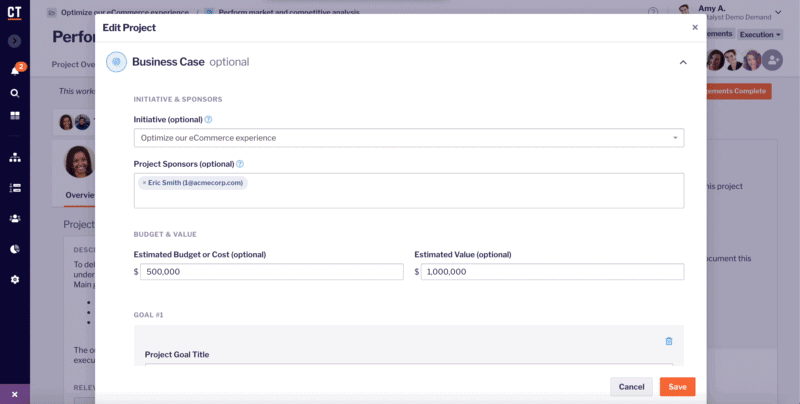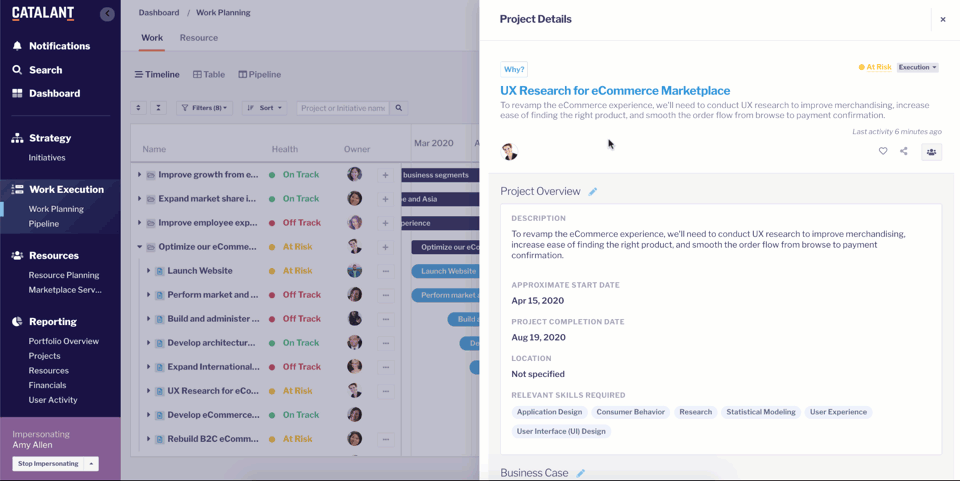Avoid Aimless Execution: Align Your Workforce with Your Strategy

Ready, Fire, Aim!
With mounting global competition and accelerating technological change, organizations are under immense pressure to execute as quickly as possible. Speed to market is critical to a company’s ability to create new sources of value for its customers, and companies whose innovations are outstripped by those of their competitors are destined to succumb to the forces of creative destruction.
With the increasing pressure to move faster, it can be tempting to adopt the entrepreneurial ethos: “Ready, fire, aim!’ But, while speed is certainly important, this action-first way of thinking and operating (like “move fast and break things” and similar mantras of Silicon Valley) has become untenable in our modern business climate. Now, deliberate strategy execution and uncompromising prioritization are more important than ever.
Even before the pandemic, business leaders were undergoing transformations to increase organizational focus. Now, as businesses must increase efficiency and execute across increasingly remote teams and digital workplaces, large organizations must move past hand-crafted transformations and use technology to heighten awareness of how work aligns with their strategic objectives and how the workforce can optimally drive the highest-impact work forward.
Breaking it Down
The Need for Alignment
As businesses face new challenges and opportunities surfaced by the spread of COVID-19 and a shifting economic and political landscape, unfocused work is becoming less tolerable. Budgets have been curtailed and organizations have had to furlough and lay off significant proportions of their workforces. Meanwhile, new operational realities and changes in market demand are forcing organizations to create new products, expand into new channels and markets, develop new capabilities, and rethink their business models and operating models. This means that businesses are running leaner than ever while simultaneously having to do things they have never done before.
Given this urgency and resource scarcity, business leaders must pivot their strategies quickly with changes in the market, determine and communicate clear business objectives and align their workforces with the highest-impact work in order to drive operational efficiency and execution. This alignment requires focus and uncompromising prioritization. What’s more, it requires organizational awareness of how strategic objectives are shifting, how in-flight initiatives are progressing, what new initiatives must be prioritized, and how the workforce aligns with ongoing and upcoming work.
Before the pandemic, most companies allocated roughly the same resources to the same business units and product lines year after year, despite evidence that this operational rigidity hindered their ability to realize strategic goals.1 Now, as business agility increasingly underpins organizational resilience and survival, the ability to dynamically and continuously align the workforce with the shifting strategic objectives of the business is essential to realizing those objectives.
1McKinsey Quarterly, “How To Put Your Money Where Your Strategy Is,” March 1, 2012.
Why is Alignment so difficult?
Strategic initiatives within large organizations are, by necessity, complex and interdisciplinary endeavors. They have interconnected workstreams that must be executed across different teams, functions, product lines, and business units. As such, there are best practices and methodologies for organizations to better orchestrate large initiatives: taking outcomes- or deliverables-based approaches to work, breaking the work down into discrete units or elements, and ensuring that those work elements are comprehensive, mutually exclusive, and clearly defined.
Enterprise PMOs, strategy realization offices, transformation offices, integration management offices, and other similar groups within large organizations have evolved to satisfy the need to orchestrate interconnected activities across portfolios of work, and these offices are essential to ensuring alignment between strategic objectives, work, and the workforce. However, even capable and experienced strategy, transformation, and portfolio leaders with strong implementation programs struggle when they do not have the right technology to support their activities.
The problem is that they simply lack the internal visibility required to effectively plan and execute. They need visibility not only into what they are trying to achieve, but also into the potential bodies of work that could help them to get there. To complicate further, they must analyze how their resources align with that potential work. Ultimately, in order to prioritize effectively and take an objectives-focused approach to strategy execution, businesses need greater awareness of how their objectives, work, and people come together.
Blurred visibility into how these elements align results in fuzzy thinking and decision-making. With an obfuscated perspective, strategy, transformation, and portfolio leaders have a difficult time synchronizing dependent projects and workstreams and making judgments about pipeline management and resource allocation.
Case Study: Strategic Plan Execution for a Multinational Pharmaceutical Company
A multinational pharmaceutical company recognized the need to digitally transform how business leaders engaged the internal strategy and consulting group, a centralized team of high-impact employees charged with taking on a wide variety of strategic initiatives and projects across the organization.
Business leaders can engage members of the internal strategy and consulting group through the Catalant Platform, which streamlines their access to the capabilities they need to execute their most important work.
Getting real-time visibility into both the pipeline of strategic projects and available resources enables the group’s leaders to make better-informed decisions about work prioritization and to accelerate execution, ensuring that members of the team with the right capabilities are deployed to the right projects at the right time.
By intelligently tracking both desired business outcomes and resource allocation, Catalant’s executive dashboards allow business leaders to easily track the ROI for projects and strategic initiatives, gain insights. into project and portfolio performance, and inform data-driven decision making and real-time strategic planning.
Enabling Awareness of How Work Aligns with Business Objectives
Business Case and Success Metrics
Project and initiative owners can make clear business cases when creating new bodies of work in the Catalant Platform. Explaining the business case, defining success metrics, and drawing a straight line from how individual projects and initiatives connect with the strategic objectives of the business allows for more informed decisions about what work is prioritized.

Alignment with Strategic Objectives
Awareness of how work is aligned with business objectives is not only useful from a top-down perspective: it also helps to create cultures of empowerment and accountability, which increases engagement and drives performance at the execution level. Employees who are executing strategically important projects can quickly see how their work contributes to higher-level initiatives and business objectives.

Enabling Awareness of How the Workforce Aligns with Strategic Work
Skills Reporting
Skills reporting views allow you to identify who within your organization has specific skills and at what proficiency. It also allows you to zoom out and identify top requested skills within your organization and identify potential organizational capability gaps.

Resource Utilization and Capacity Planning
Resource Capacity Planning and Utilization views also allow you to expose where different team members may be over-worked or under-engaged, which both helps to reallocate resources to optimize efficiency and also de-risks execution.

Access to Internal and External Resources
These reporting views make it easy for business leaders to understand how their workforces align with the work to be done. They are also critical to understanding where project teams have knowledge, skill, and capacity gaps. To seamlessly fill those gaps, project and initiative owners can access the capabilities they need to execute, whether those capabilities are found within the company or through Catalant’s Expert Marketplace of nearly 70,000 independent consultants and more than 1,000 firms.

Getting from Strategy to Execution calls for a centralized SaaS platform.
Through years of developing Catalant’s SaaS platform and Expert Marketplace with our enterprise customers, we’ve learned that uniting the right people, processes, and technology is essential for effectively executing strategy.

Catalant’s SaaS platform helps organizations align their workforces with their business objectives to more effectively execute their strategies.